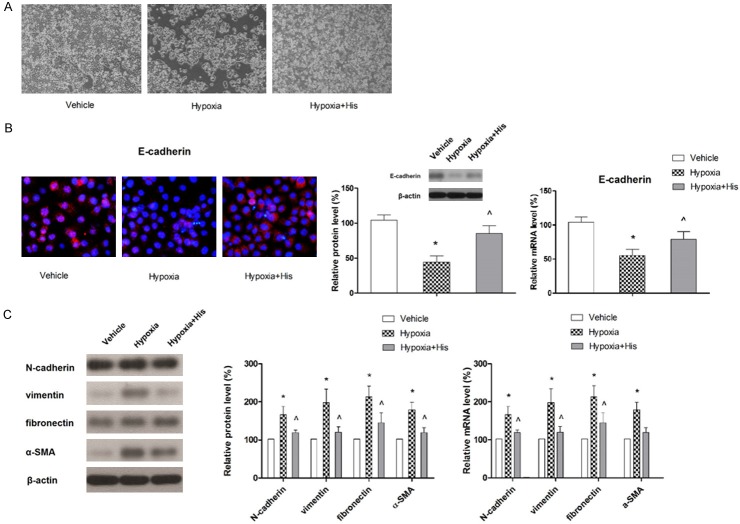Recently, we rechecked all our papers and realized that some data in Figures 2 and 3 were wrongly presented. The data presented came from the wrong folder. Therefore, we would like to make corrections. Hope you can help me with this process. The revised Figures 2 and 3 are presented as following:
Figure 2.

Hispidulin suppresses hypoxia-induced migration (A) and invasion (B) in HT-29 cells. HT-29 cells growing in hypoxia were treated with hispidulin (25 μM) for 24 hours. Cell migration and invasion were assessed by wound scratch and Transwell assays, respectively. The results represent mean ± SD from three independent experiments. *P < 0.05 vs. control, ^P < 0.05 vs. hypoxia.
Figure 3.
Hispidulin prevents hypoxia-induced EMT. HT-29 cells growing in hypoxia were treated with hispidulin (25 μM) for 24 hours. A. Effect of hispidulin on cell morphology. The images represent three independent experiments. B. The effect of hispidulin on the expression of E-cadherin examined by florescence staining, western blotting and qRT-PCR. The images and blot are representative of three independent experiments. C. The effect of hispidulin on the expressions of N-cadherin, vimentin, fibronectin and α-SMA determined by western blotting and qRT-PCR. The immunoblot represents three independent experiments. Data are presented as mean ± SD. *P < 0.05 vs. control, ^P < 0.05 vs. hypoxia.



